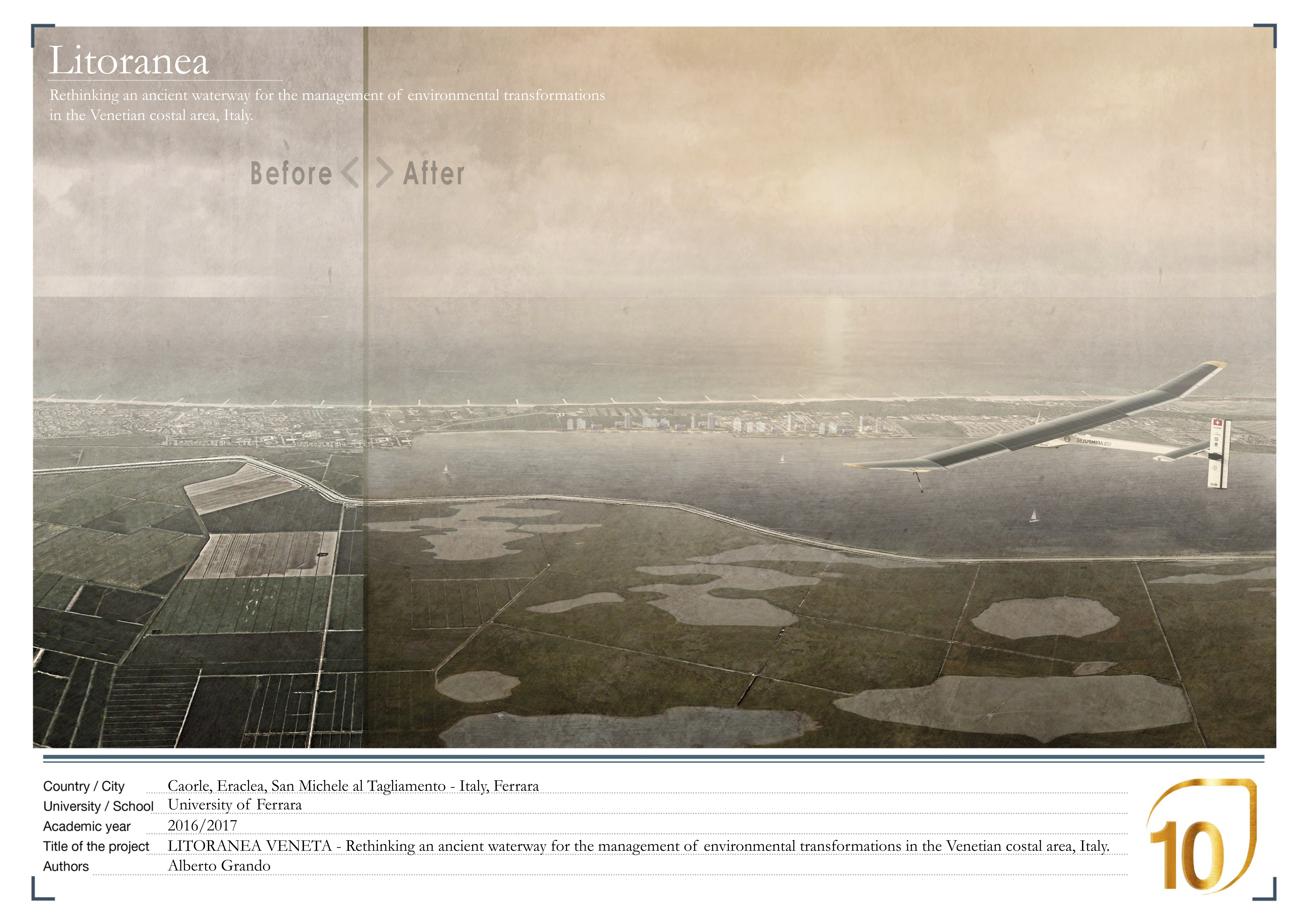
LITORANEA VENETA. Rethinking an ancient waterway for the management of environmental transformations in the Venetian costal area, Italy.
Landscape architecture and infrastructures
University of Ferrara
The thesis focuses on the environmental potential of reconditioning the ancient “Litoranea Veneta”, a waterway flowing parallel to the Adriatic coast from the Venetian Lagoon to the Trieste Gulf. The project strategy aims at creating along the whole infrastructure's path a wetland system capable of increasing resilience performances and unveiling new touristic opportunities.
During the last century, the combined action of wetlands' reclamation for farming and coastal engineering for tourism exploitation have shrunk the entire waterway into a discontinuous system of small canals barely navigable. The hydraulic exchange between the sea and the inland has been almost interrupted threatening ecosystems and hydrogeological security. Existing plantations are mostly exhausted and subject to a remarkable subsidence in wide areas.
Grounded on such trends' analysis and on the costs assessment related to the maintenance of the present territorial arrangement, the project strategically selects farming areas to be converted into wetlands. Such operation allows to envisage a feasible reconversion of remaining crops into more sustainable organic farms capable of boosting biodiversity. As set by the project, the entire hydraulic system reaches a storing capacity of 3 million water m3, acting both as a defence from flooding and as a fresh water storage for agriculture.
Moreover, the wet buffer zone along the waterway represents a new littoral, a “second coast” in which to develop new touristic paths, nautical facilities and public services linked to lagoon areas. In this scenario, the “Litoranea”, by acting as landscape device of territorial transformation, represents a driver for shifting from a rigid environmental system to a more dynamic and resilient one.
